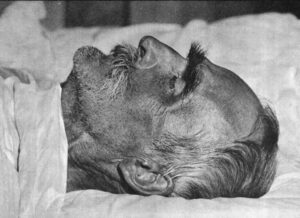 There are many breakthrough events in Polish history associated with the figure of Józef Piłsudski. During World War I, he was a commander of the Legions, and his return to his homeland on 10 November 1918 signalled the declaration of Poland’s independence. In this now-free country, the Sejm entrusted Piłsudski with the post of Chief of State. As Commander-in-Chief, Piłsudski organised armed resistance against the Bolshevik invasion in 1919. He also became the first Marshal of Poland. He served as Prime Minister twice, in 1926-28 and in 1930. On 12 May 1926, he staged an armed coup d’état in the country, the so-called May Coup.
There are many breakthrough events in Polish history associated with the figure of Józef Piłsudski. During World War I, he was a commander of the Legions, and his return to his homeland on 10 November 1918 signalled the declaration of Poland’s independence. In this now-free country, the Sejm entrusted Piłsudski with the post of Chief of State. As Commander-in-Chief, Piłsudski organised armed resistance against the Bolshevik invasion in 1919. He also became the first Marshal of Poland. He served as Prime Minister twice, in 1926-28 and in 1930. On 12 May 1926, he staged an armed coup d’état in the country, the so-called May Coup.
Józef Piłsudski was also a Sybirak. In 1887, when he was 20-year-old, he was accused of taking part in a failed plot to assassinate Tsar Alexander III. He was sentenced to five years’ settlement in Siberia. He served his sentence in Kirensk on the Lena River and in Tunka.
He died on 12 May 1935 in Warsaw at the age of 68.
Posthumous photograph of Józef Piłsudski, source: Public domain



